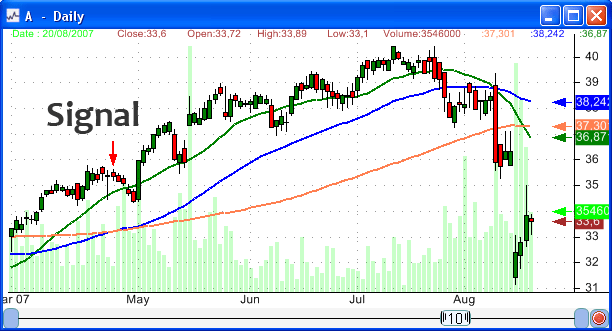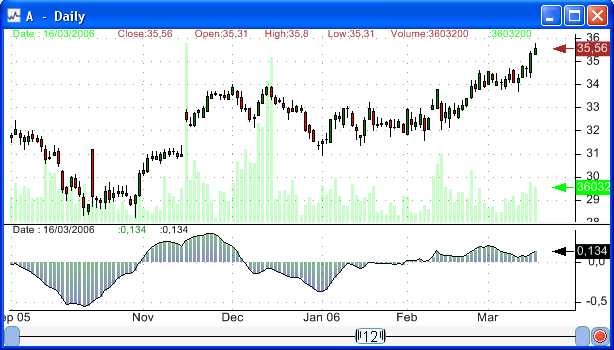Trend followers are investors or traders that take profit from the long-term moves of the traded security. A security is trending when it is headed in one direction, either up or down. The trend following strategy goal is not to forecast the future price of a stock, it aims instead at following an asset movement until an exit signal occurs. In other words, a trend trading strategy assumes that the present direction of the stock will continue into the future. Trend following systems can be summarized as follow: Buy or Cover when the prices are moving up, and Short or Sell when prices are going down. Since trends are of different amplitudes, traders must pick major trends and holds positions in the direction of the trend in order to make the most profits. This kind of strategy can be applied to any market and asset (Stocks, Forex, Futures, Options, ETFs and Bonds); it can be long, short or long/short. It may also be used with a weekly, daily (end-of-day) or intraday period (1-hour, 1-minute...). There are different techniques to implement a trend following system. Here is a list of some of the popular trend following systems: - Close price crosses above the moving average. The moving average could be simple, double, exponential, weighted.... The trend trader must also choose the moving average lookback period. The QuantShare formula is: close > sma(close, 20) for the 20 period simple moving average. You can use the 'cross' formula, so the signal will be valid only for the crossing bar: cross(close, sma(close, 20)) - Moving average crosses over another moving average. The two moving average should have different period. The first moving average must have a lower period than the second one: The QuantShare formula is: sma(close, 50) > sma(close, 100) - The first moving average (short-term) crosses over the second moving average (medium-term) and the second one is above the third moving average (long-term) . Example: sma(close, 20) > sma(close, 50) && sma(close, 50) > sma(close, 100)  - The close price approach a support or a trend line then goes up. This pattern involves the use of advanced formulas to programmatically detect the trend lines and implement the trend following system. We will explain how to do that in another post. - Channel breakout: Close price is trading above the highest close price over a number of preceding bars. QuantShare example: close >= hhv(close, 30) - Chart Patterns: Use a chart pattern to detect trends and breakouts. For example, you can create a trend following system by detecting assets that are within a rising wedge pattern. A signal could be generated if prices bounces off the support line. Here is an article that shows you how to detect chart patterns programmatically using QuantShare trading software: Detect chart patterns using the auto support/resistance indicator - Intraday High/Low: An intraday trend following system can be created by calculating the high/low of the first 30 minutes of a trading session then generating a buy signal if the price crosses above the high level (resistance) and a short signal if it crosses below the low level (support). - The MACD line crosses over the signal line (that is, the MACD histogram crosses over the zero line, because the MACD histogram is the difference between the MACD line and the Signal line). QuantShare example: Macd(14) - MacdSignal(14)  - The Trix indicator crosses over its moving average. QuantShare example: trix(14) > sma(trix(14), 10) These trend following systems can be implemented in your trading systems and backtested using daily, weekly, intraday or any other timeframe. A short strategy could be implemented for every entry signal discussed above. Example: for the two moving average crossing. Instead of sma(close, 50) > sma(close, 100), a short trader could use the following trading formula: sma(close, 50) < sma(close, 100)
|

|
|
|
|







